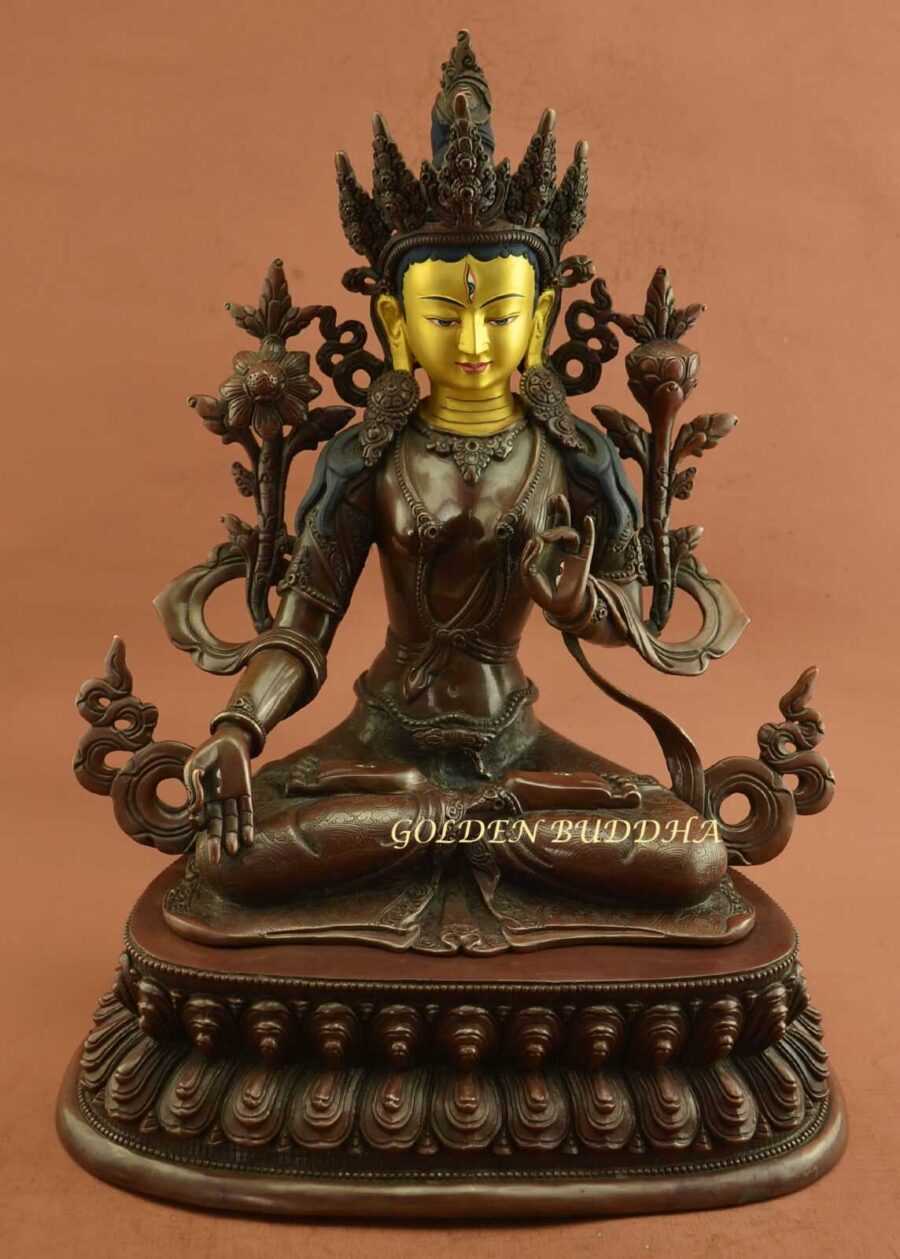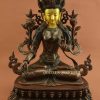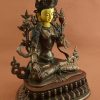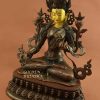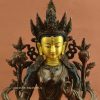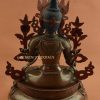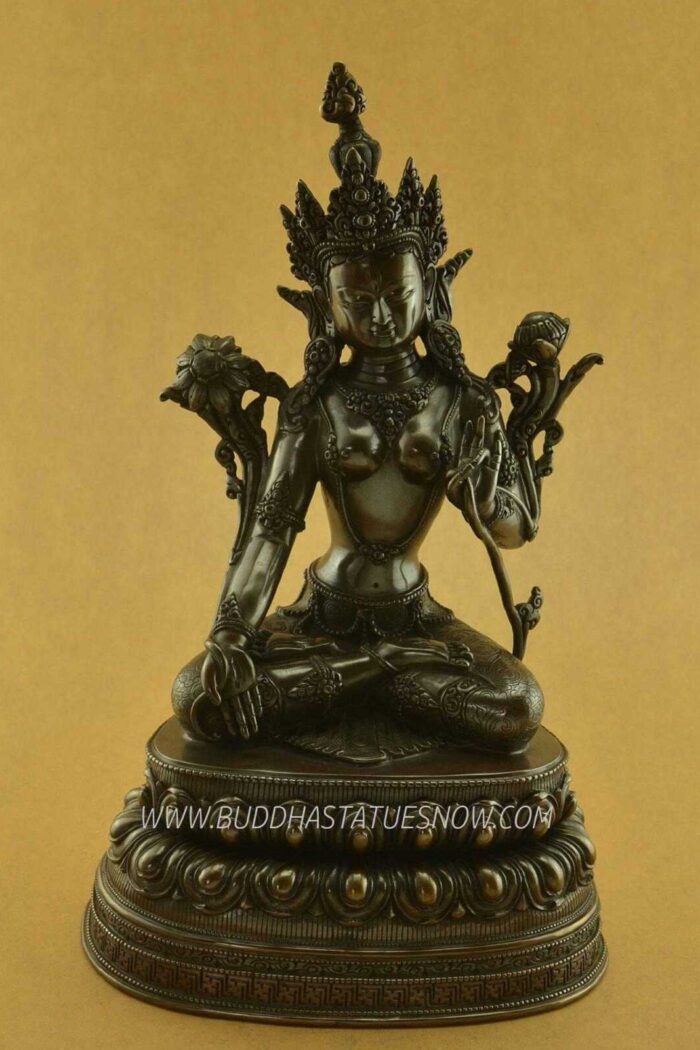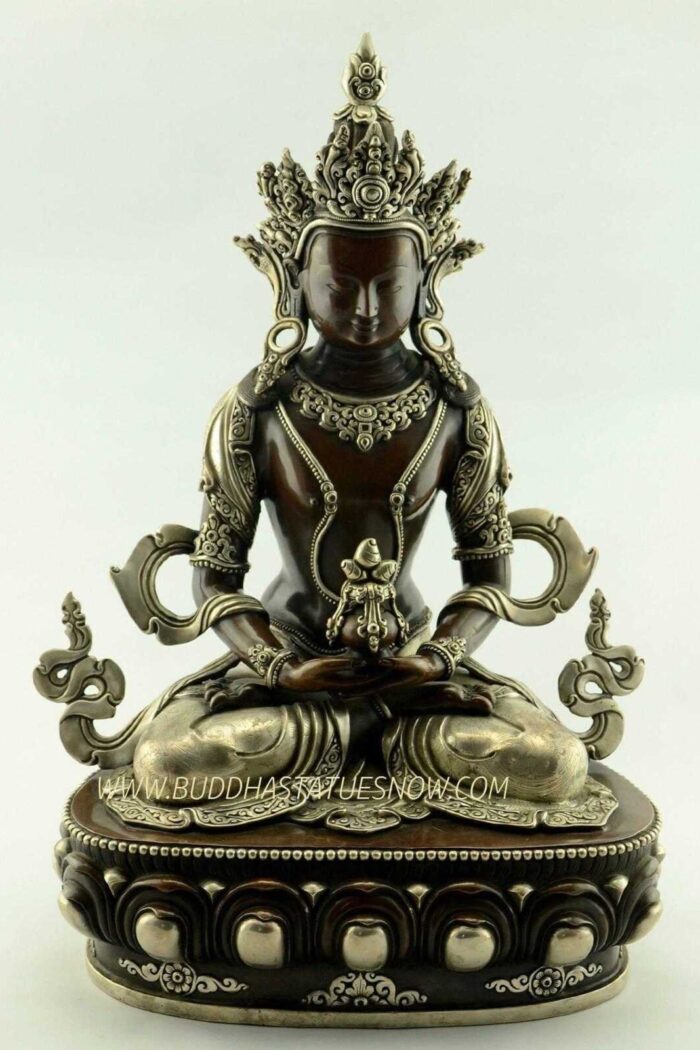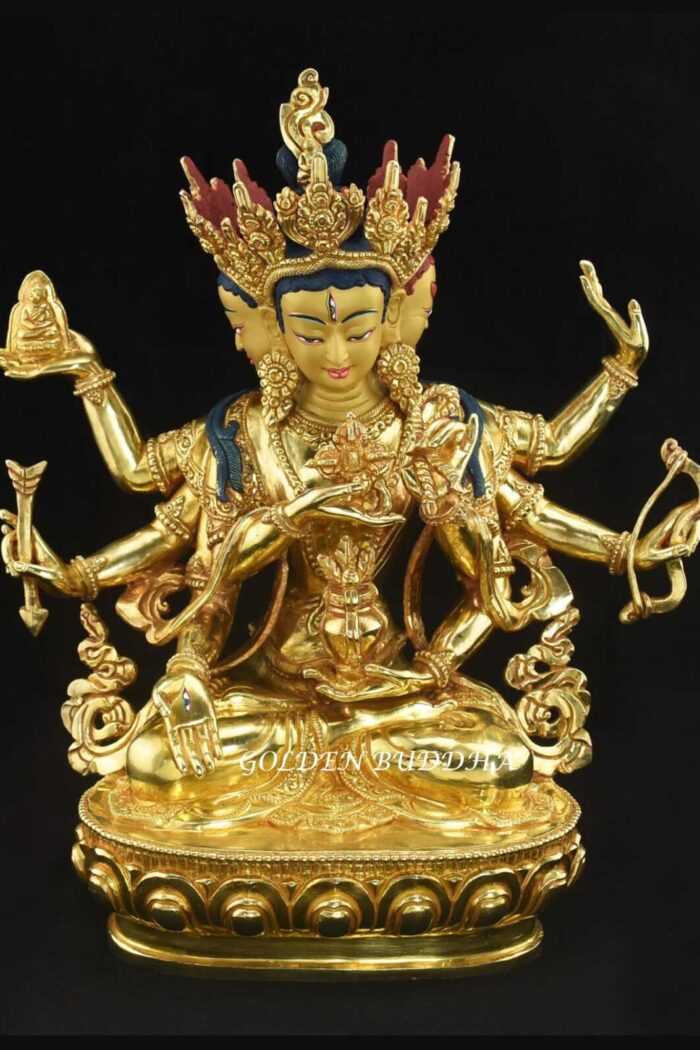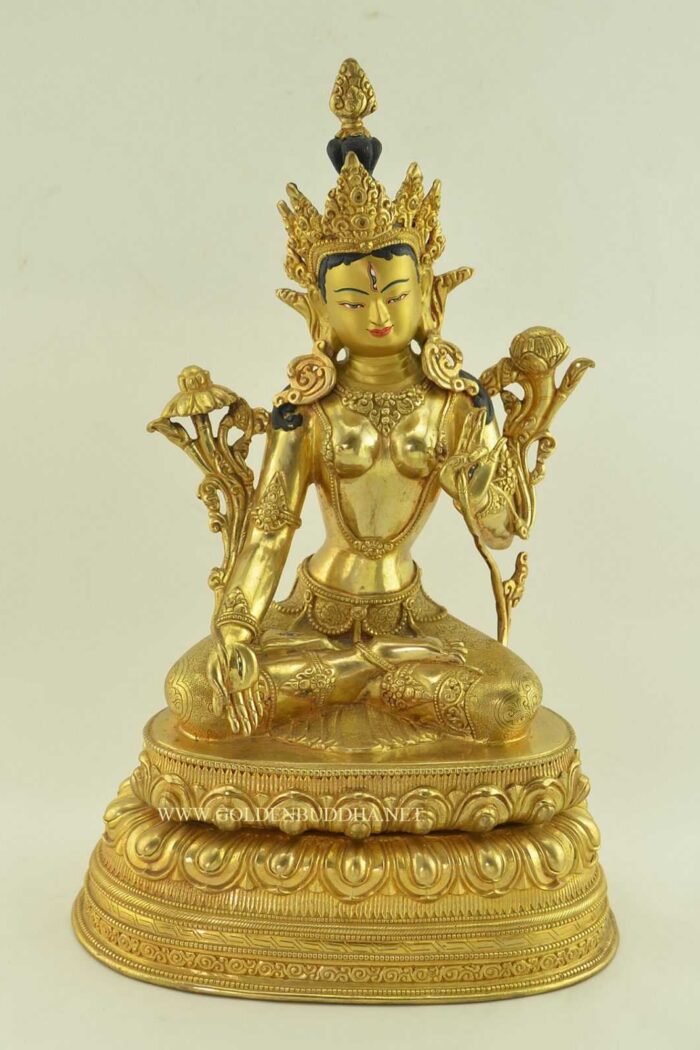Our beautiful Dolkar sculpture has all of the classic features of Seven Eyed Tara. Therefore, she is depicted with her 7 eyes, 2 lotus flowers and she displays both the Abhaya and Varada mudras. Additionally, Dolkar is seated in the full lotus pose on a double lotus pedestal.
Our Nepali artisan gave the statue an antiquated finish and a beautiful gold painted face. Additionally, this beautiful Dolkar sculpture wears the crown and jewels of a Bodhisattva. At the buyer’s request we can embellish the crown and jewels with turquoise and red coral stones before delivery. The special stones will highlight the statue features very well and inspire all those who see it.
Dolkar is one of the most popular depictions of the bodhisattva Tara. The origins of Tara lie in the compassion of Avalokiteshvara. In Tibet, it is believed by devotees that she was born from a teardrop that fell from his eye. After her birth, Tara became dismayed that so few females had reached fully enlightened status. As a result, she refused incarnation as a male until females became better represented among the ranks of the Buddhas.
Symbolism of Beautiful Dolkar Sculpture
The Abhaya “protection” mudra is a classic Buddhist mudra that is recognized by practitioners from all the schools of Buddhism. This hand symbol for fearlessness is very important in Buddhist beliefs. Indeed, when devotees see the mudra, it inspires a sense of fortitude and confidence. Our beautiful Dolkar sculpture is depicting this mudra with her left hand held chest high and palm facing forward.
The sculpture is also using the Varada or “gift giving” mudra. Indeed, Dolkar is certainly affiliated with generosity. Dolkar is also known as the Cintachakra or “wish fulfilling wheel”. She is also one of the long life deities in Tibetan Buddhism. Additionally, she is empowered with the attributes of healing, compassion and serenity. Click here to learn more about the special attributes of Dolkar.


